Just what is in the Clark A basement?
Story by Josh Zaffos Photos by CSU PhotographyAmong the underappreciated spaces on campus, the Clark Building A-wing basement is generally unknown or avoided until someone walks down an extra flight of stairs by mistake. But the subterranean floor of Clark holds jaw-dropping collections of artifacts – along with actual jaws of bison and other fauna – within the CSU Archaeological Repository and other labs and research spaces of the Department of Anthropology and Geography.
Established in the 1970s, the repository stores materials from more than 1,200 archaeological sites in Colorado and beyond. Holdings have grown through donations as well as collections from the department’s annual Archaeology Field School and other research. Jason LaBelle, who directs the Center for Mountain and Plains Archaeology (CMPA), another basement lab, has helped grow the collections through his terms as field school director and other ongoing surveys at sites that show evidence of human activities in Colorado not just centuries but also millennia ago.
In sum, repository collections represent more than 13,000 years of human and natural history in northern Colorado, the Rocky Mountains, and the desert Southwest. Artifacts include stone tools, ceramics, basketry, beads, bone, shell and other organic fragments.
The department’s Archaeology Lab, directed by Mary Van Buren, holds a collection of more recent historic items, such as glass medicine bottles, tin food cans, bullet casings, and household items collected from historic sites in and near Ouray, Colorado, including a late 19th- and early 20th-century red-light district.
More than just storehouses, the repository and labs are learning spaces. Each year, undergraduate and graduate students complete practicums, internships, and work in the repository, gaining hands-on curation skills with artifacts and learning how to inventory materials for museums and heritage sites. Dozens of students have also helped catalog and completed graduate and undergraduate research on the historic items in the Archaeology Lab and archaeological materials in the CMPA.
Another basement Anthropology and Geography lab, the Center for Research in Archaeogeophysics and Geoarchaeology (CRAG), is a “wet lab” – one that uses liquid chemicals for analysis and research – specializing in studying soil samples from archaeological sites. CRAG Director Edward Henry and student researchers use cold storage, ovens and precision microscopes to look for evidence of past human activity and land modifications by practically sifting through soil samples and making use of both digital and physical field data.
As CSU prepares to renovate Clark, plans are in the works for increased exhibit space for Anthropology and Geography and other Liberal Arts departments to show off collections, artwork and more. In the meantime, here’s a peek at CSU’s archaeological collections and cutting-edge equipment.
Note: All faculty and graduate students currently housed in the Clark A basement will be relocated in May/June 2023 to accommodate the revitalization process starting in August.
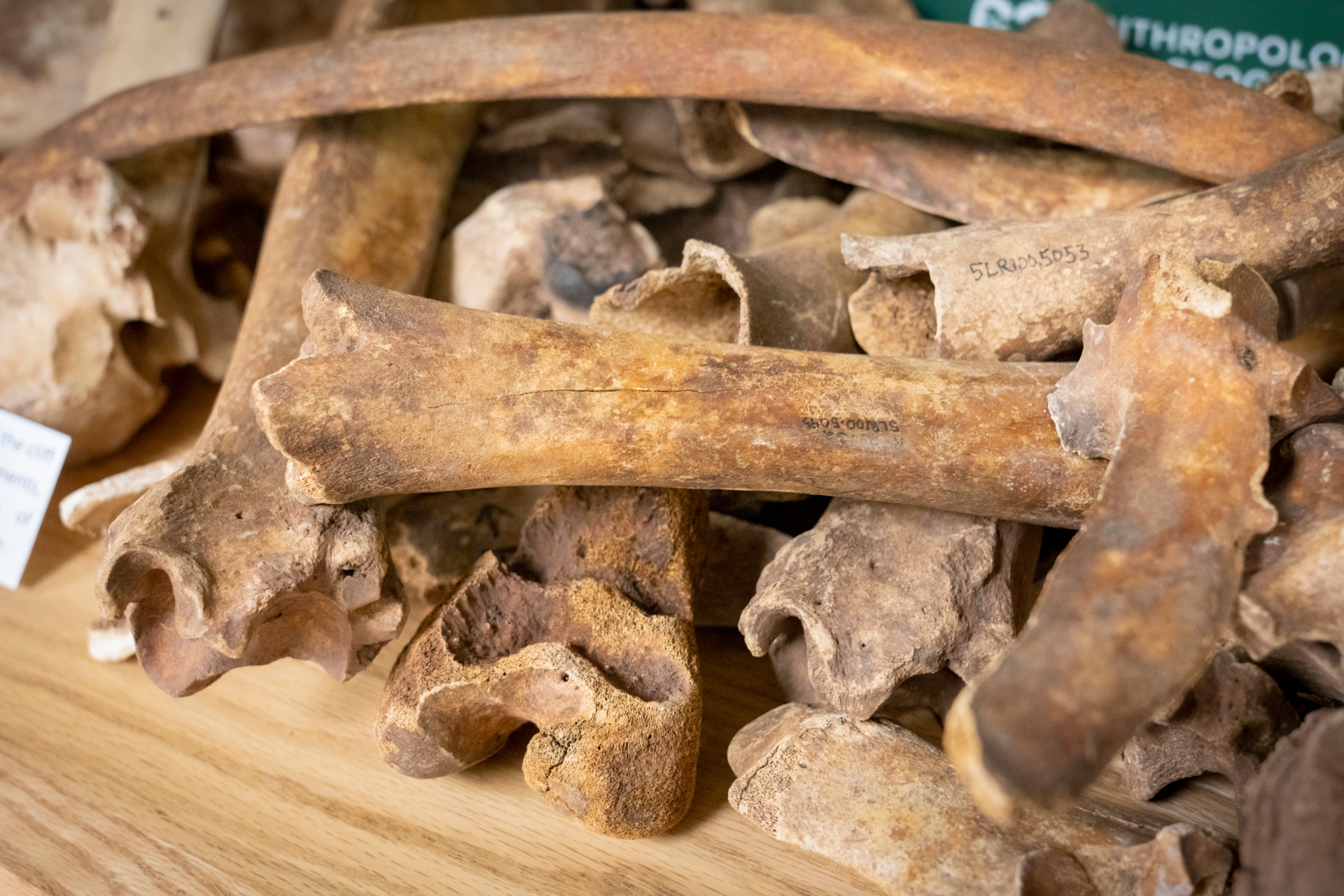
Array of Bison Bones
An array of bison bones excavated from the Roberts Ranch buffalo jump in northern Larimer County. The site represents an Indigenous bison kill that took place approximately 350 years ago along the North Fork of the Cache la Poudre River in what is today, Livermore, Colorado.
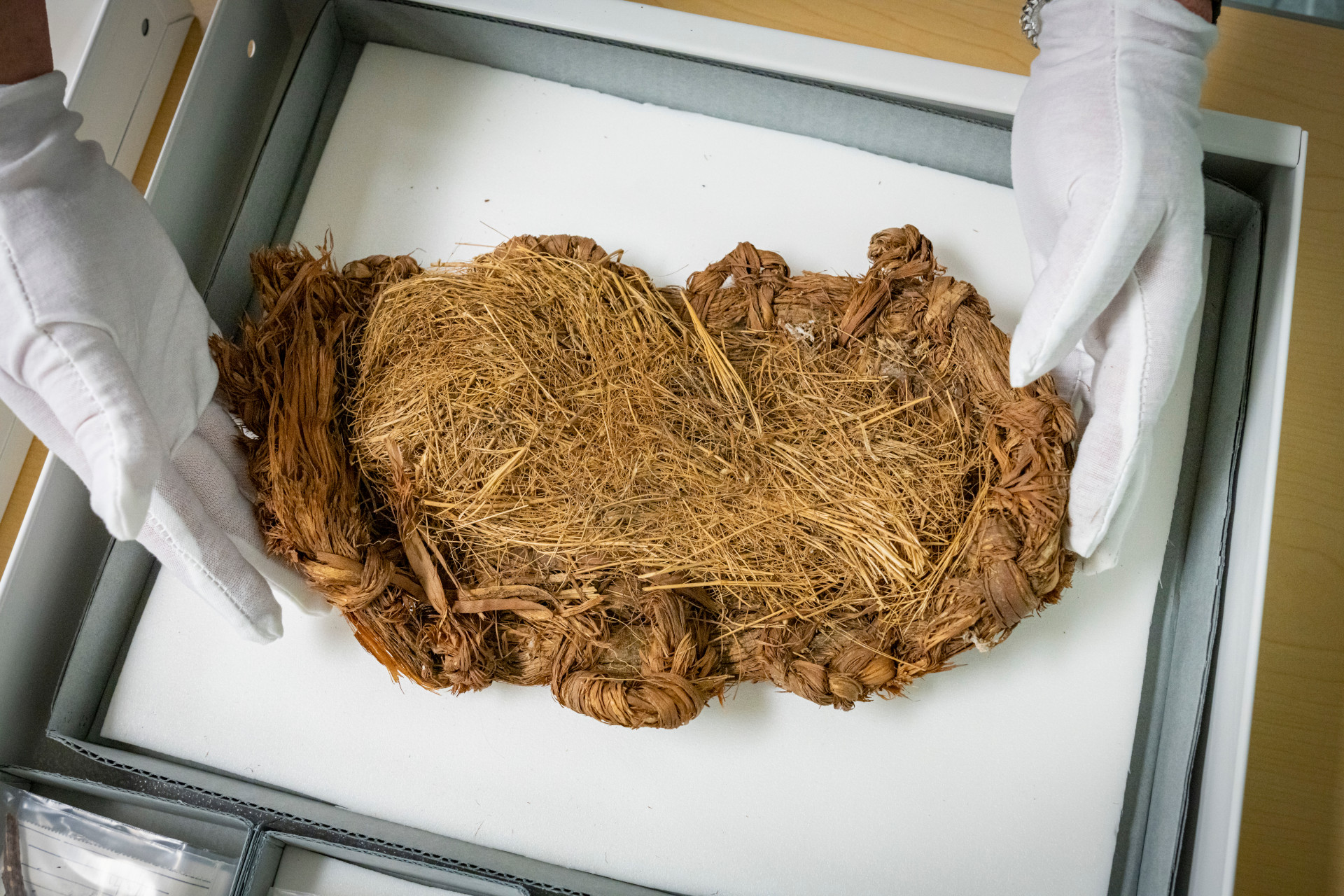
Artifact made with Juniper Bark
This artifact from the Fremont culture made with juniper bark was discovered in a rock shelter in Western Colorado, but its use remains unclear. Originally thought by archaeologists to be a plaited tray, the cultural rights and protection director of the Ute Indian Tribe of Utah suggested the artifact may have another purpose. So, research on this piece is ongoing.
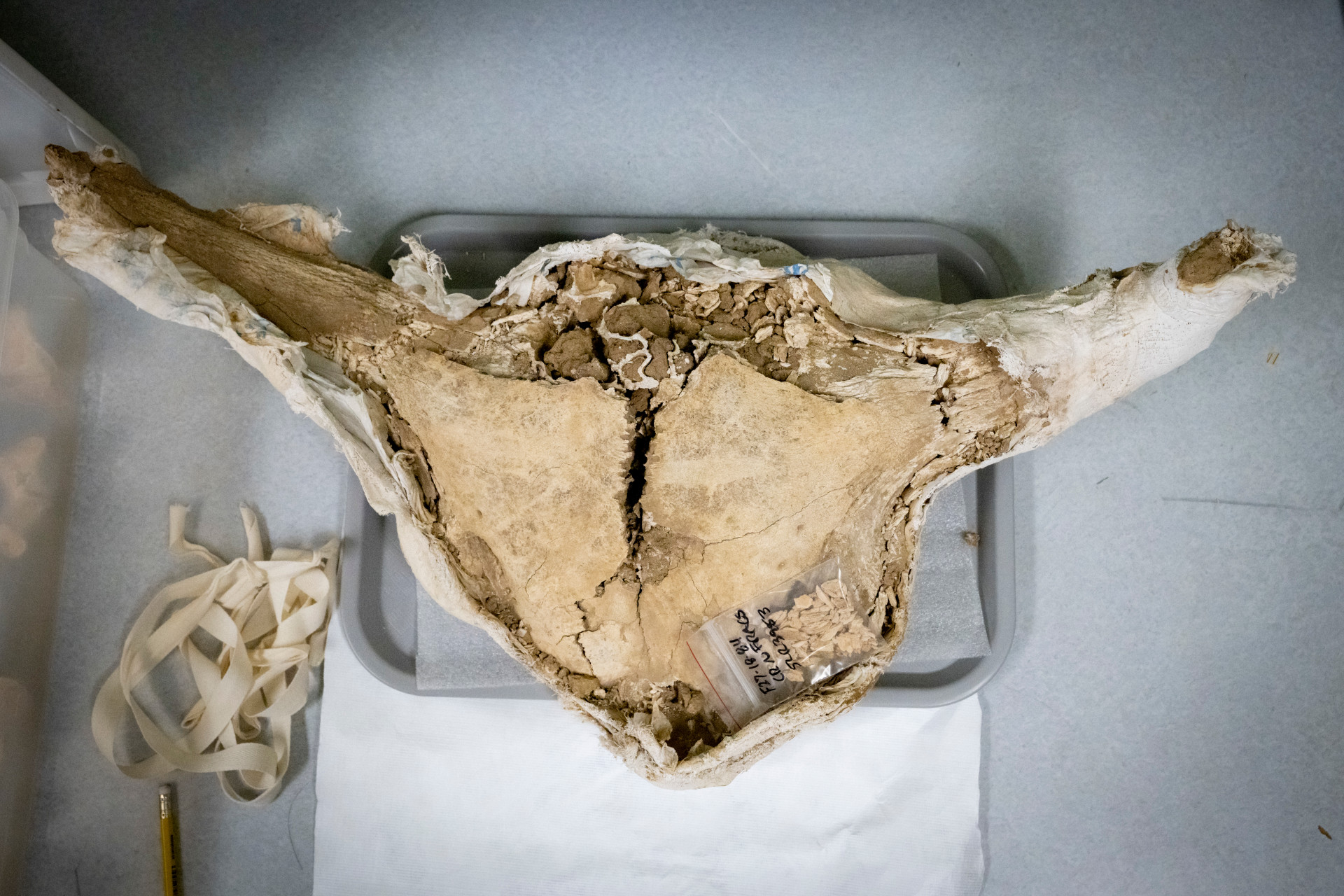
North American Bison Skull
This North American bison skull is one of many discovered at the Kaplan-Hoover bison bone bed in Windsor, Colorado. The Kaplan-Hoover archaeological site dates to 2,700 years ago and is one of the largest single-event kills ever found in Colorado. The site was excavated by CSU in the late 1990s and the extensive collection of more than 10,000 bison bones is now housed in the Archaeological Repository.
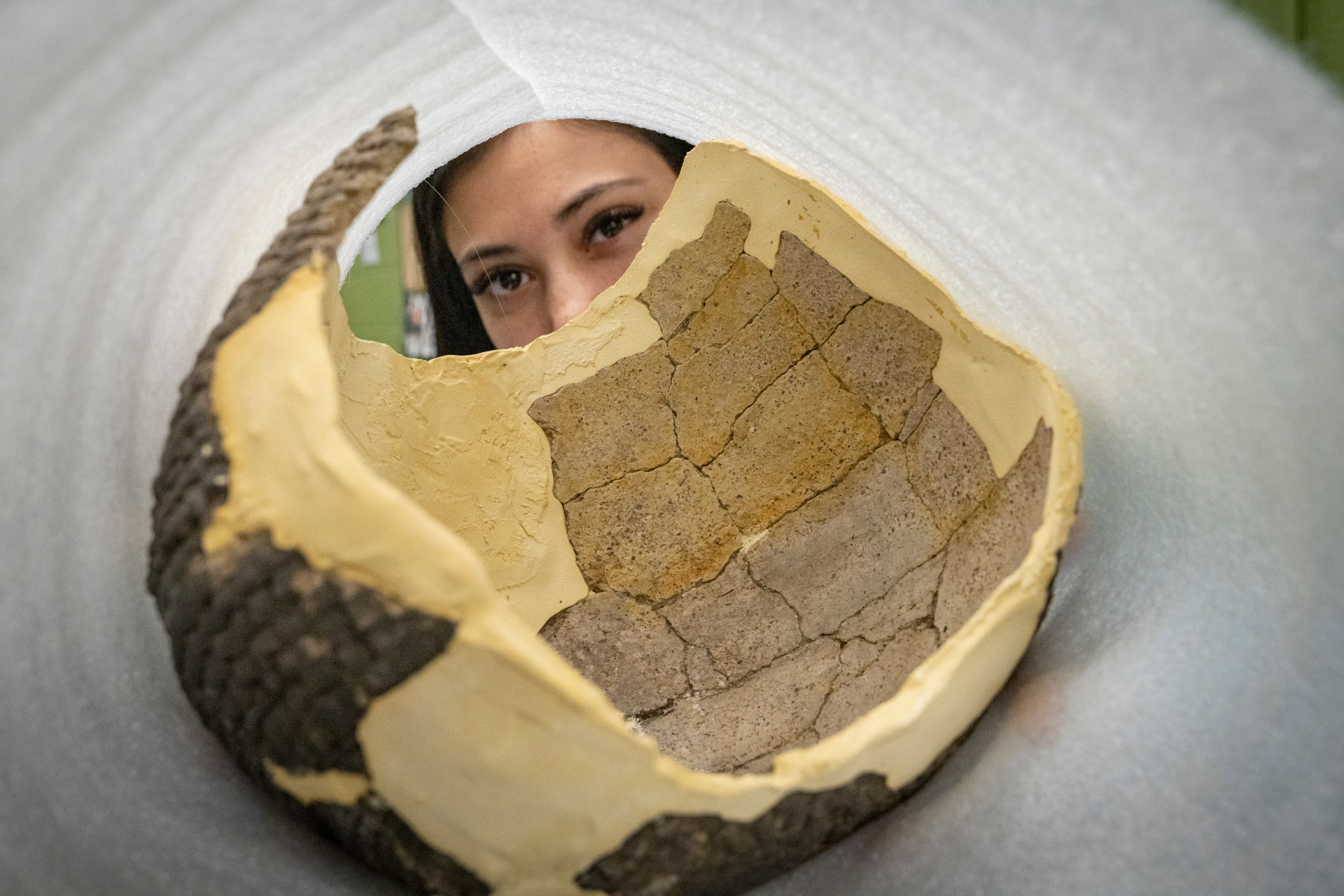
Ancestral Puebloan Pottery Vessel
Undergraduate anthropology student Myreya Sáenz-Cataño assists in the re-housing and curation of a reconstructed corrugated pottery vessel originally found in pieces at an Ancestral Puebloan site near Mesa Verde.
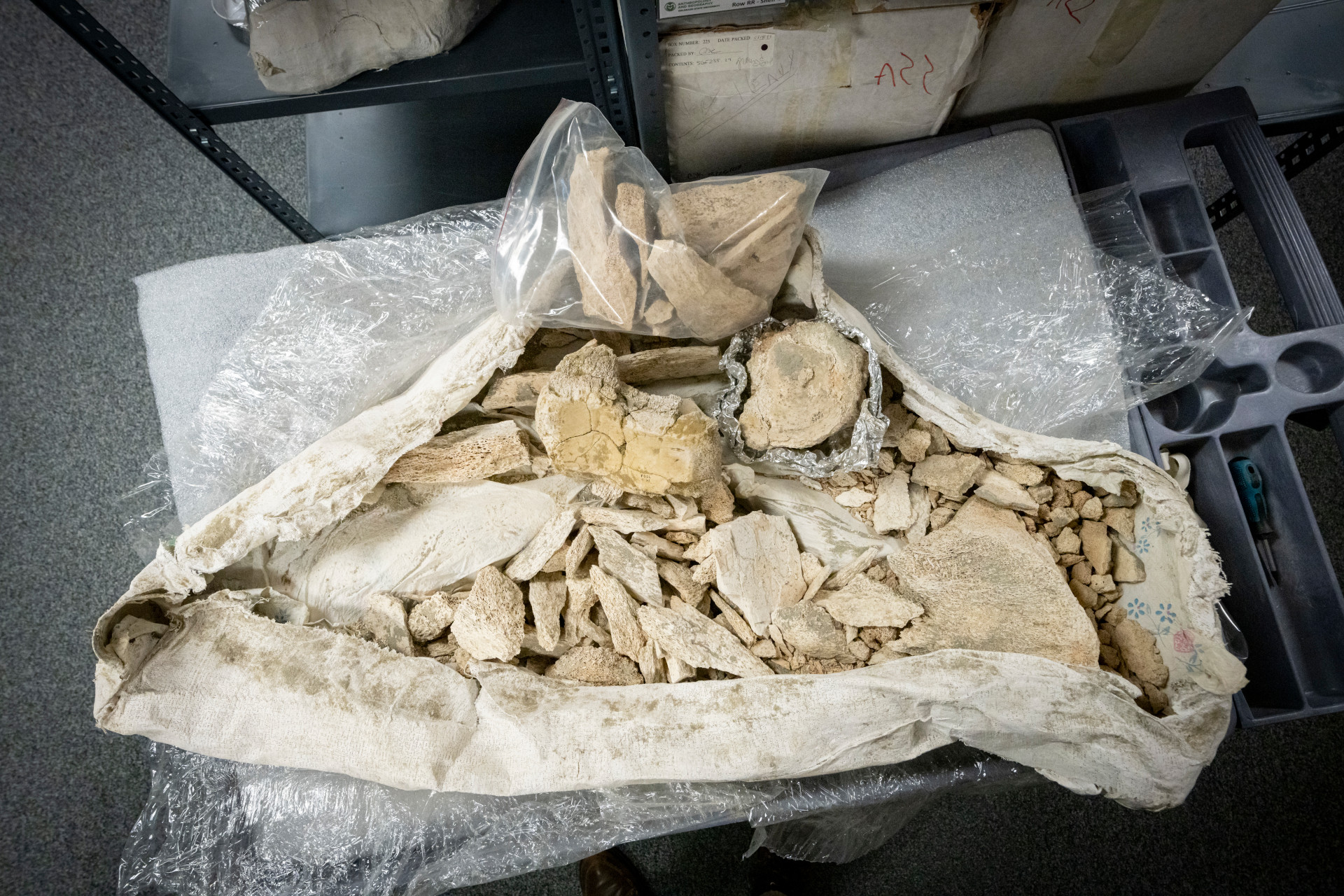
Columbian Mammoth Bones
Some of the oldest bones in the Archaeological Repository belong to Columbian mammoths that roamed northern Colorado at the end of the last Ice Age. These mammoth bones were unearthed during the construction of Fossil Creek Park in South Fort Collins in the early 2000s. The city park’s playground now includes a Tar Pits Play Area and a giant mammoth sculpture that children can climb.
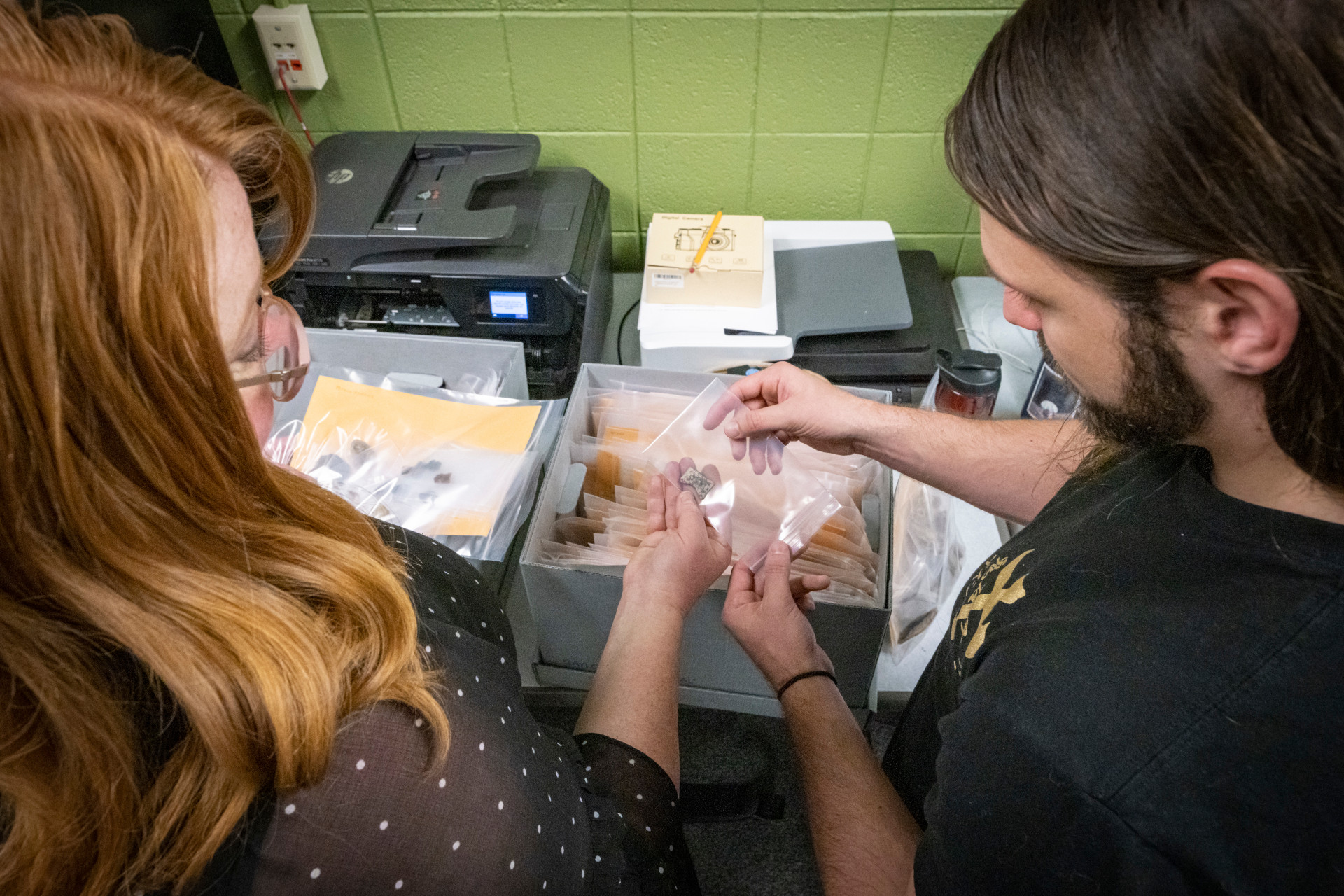
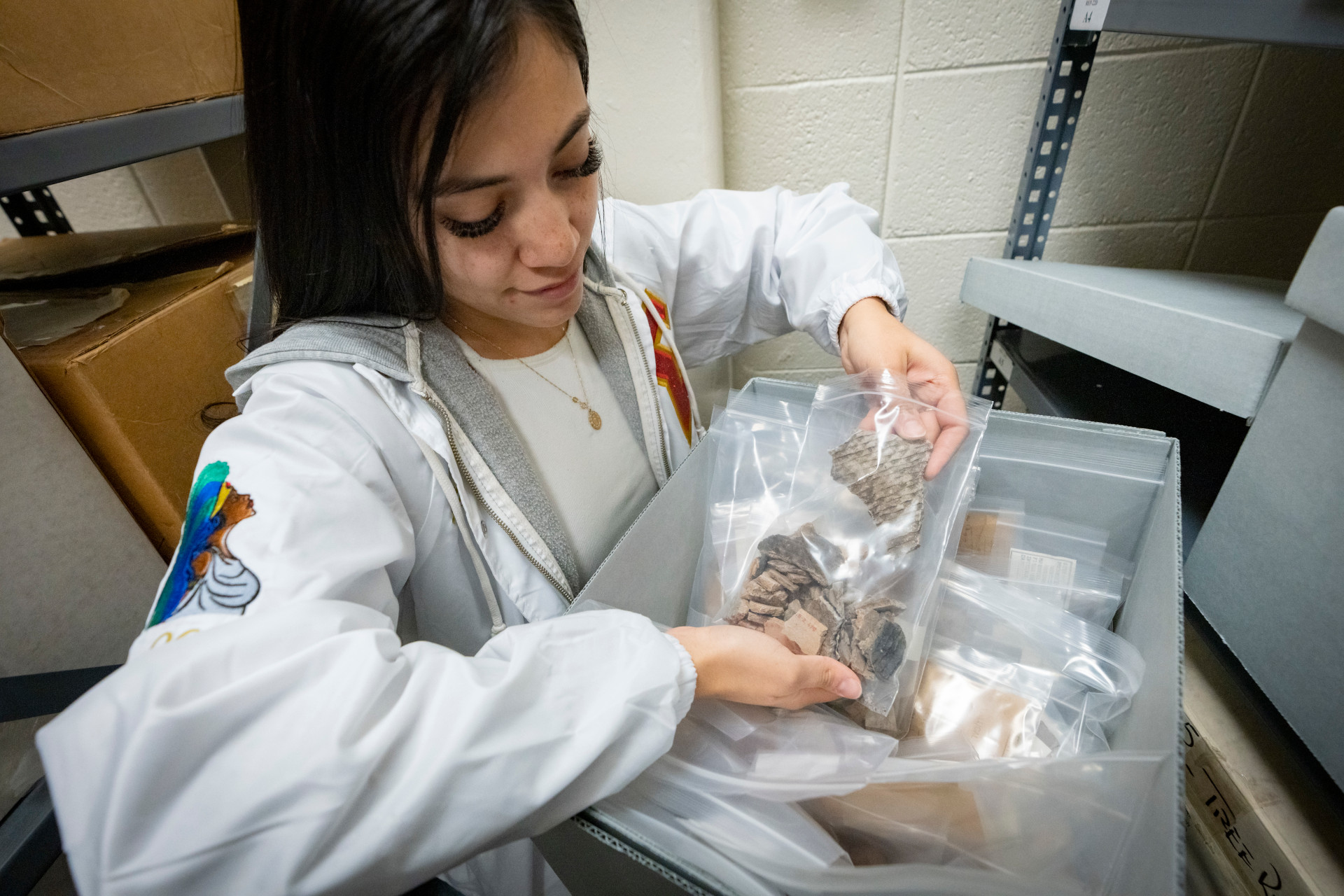
Practicum Opportunities for Anthropology Students
Left to Right: Archaeological Collections Coordinator Jeannine Pedersen-Guzmán works with anthropology major Johnny Rendon to examine a recent donation of archaeological material collected in Colorado during the 1930s. Rendon is completing Practicum in Anthropology (ANTH 486), which is a requirement for Anthropology and Geography’s Museum and Cultural Heritage Studies Undergraduate Certificate.
Undergraduate Anthropology student Myreya Sáenz-Cataño enrolled in Practicum in Anthropology, examines ceramic sherds from the Archaeological Repository collections. This type of corrugated pottery was common during Ancestral Puebloan occupations dating between 950-1100 AD in Southwestern Colorado.
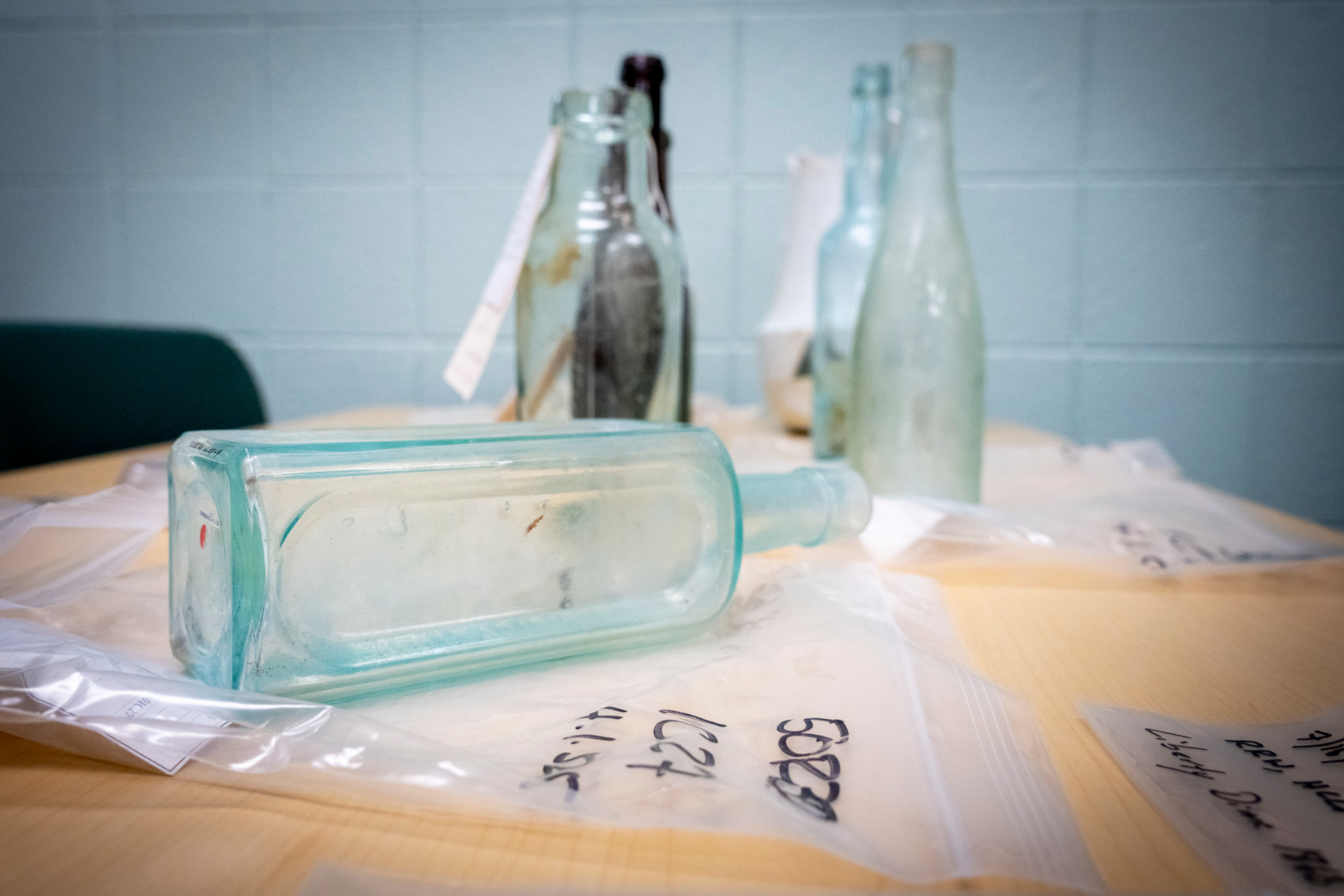
Vanoli Pharmaceutical Bottle
A pharmaceutical bottle from the Vanoli site, a late 19th-century red-light district in Ouray, Colorado, part of the CSU Archaeology Lab holdings in the Clark basement. Excavations at the Vanoli site yielded thousands of bottles and bottle fragments as well as jewelry, shoes, buttons, opium pipe bowls and a large amount of ammunition of various types. This collection of more than 40,000 artifacts provides information about the daily lives of the people who worked in and patronized the red-light district. It is also an important resource for training archaeology students in the identification and analysis of historical artifacts.

Ouray Pharmaceutical Bottle
A pharmaceutical bottle that was produced for Burt E. Moritz’s drugstore, which was located on Larimer Street in Denver at the end of the 19th century. The bottle was recovered from a privy in the red-light district of Ouray, Colorado, during excavations that took place in the 1970s. Bottles like this one can be used to assess the health concerns of workers in the red-light district as well as the economic connections between Ouray and cities in the U.S. and overseas.
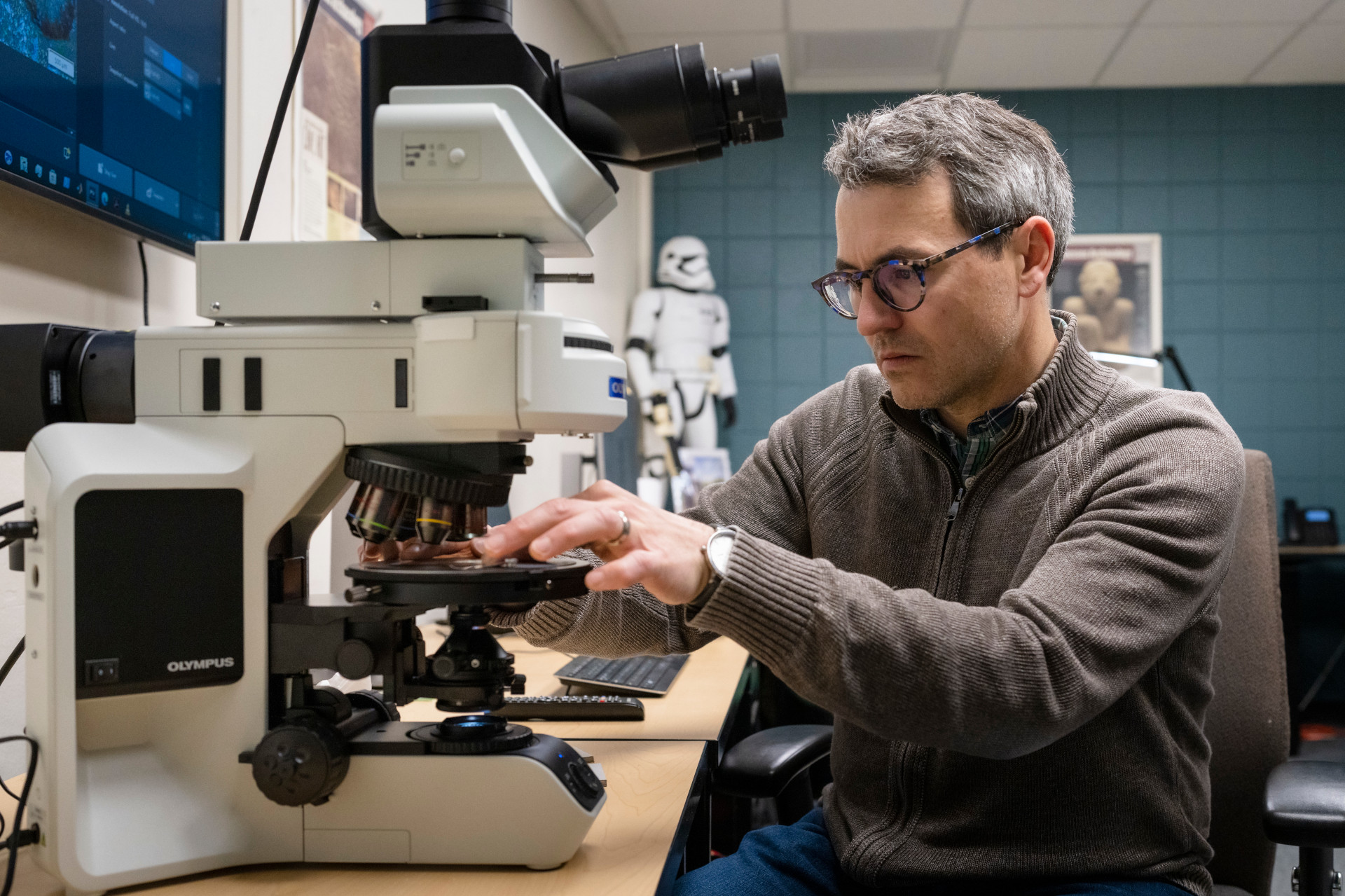
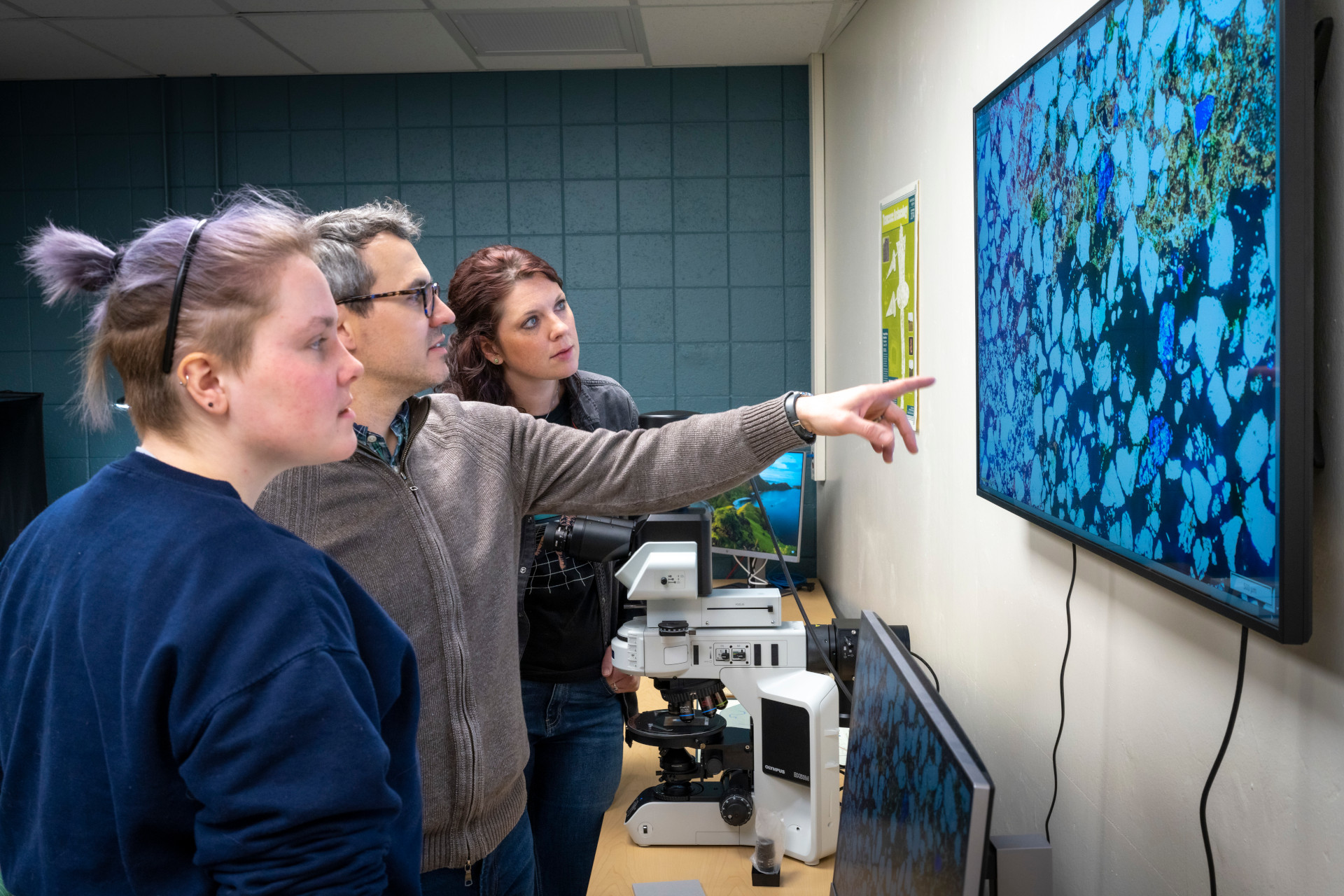
Microscopic Analysis
Left to Right: In the Center for Research in Archaeogeophysics and Geoarchaeology (CRAG), Director Edward Henry working with an Olympus BX53M petrographic microscope for the analysis of soil micromorphology slides. The equipment allows members of the CRAG lab to look at microscopic evidence in soil samples for past human modifications to their environments.
Edward Henry, master’s student Lia Kitteringham, and undergraduate student Margie Keith examine the microscopic mineral characteristics of soil – magnified onto a screen from a microscope slide – from an archaeological site to determine how depositional features form.
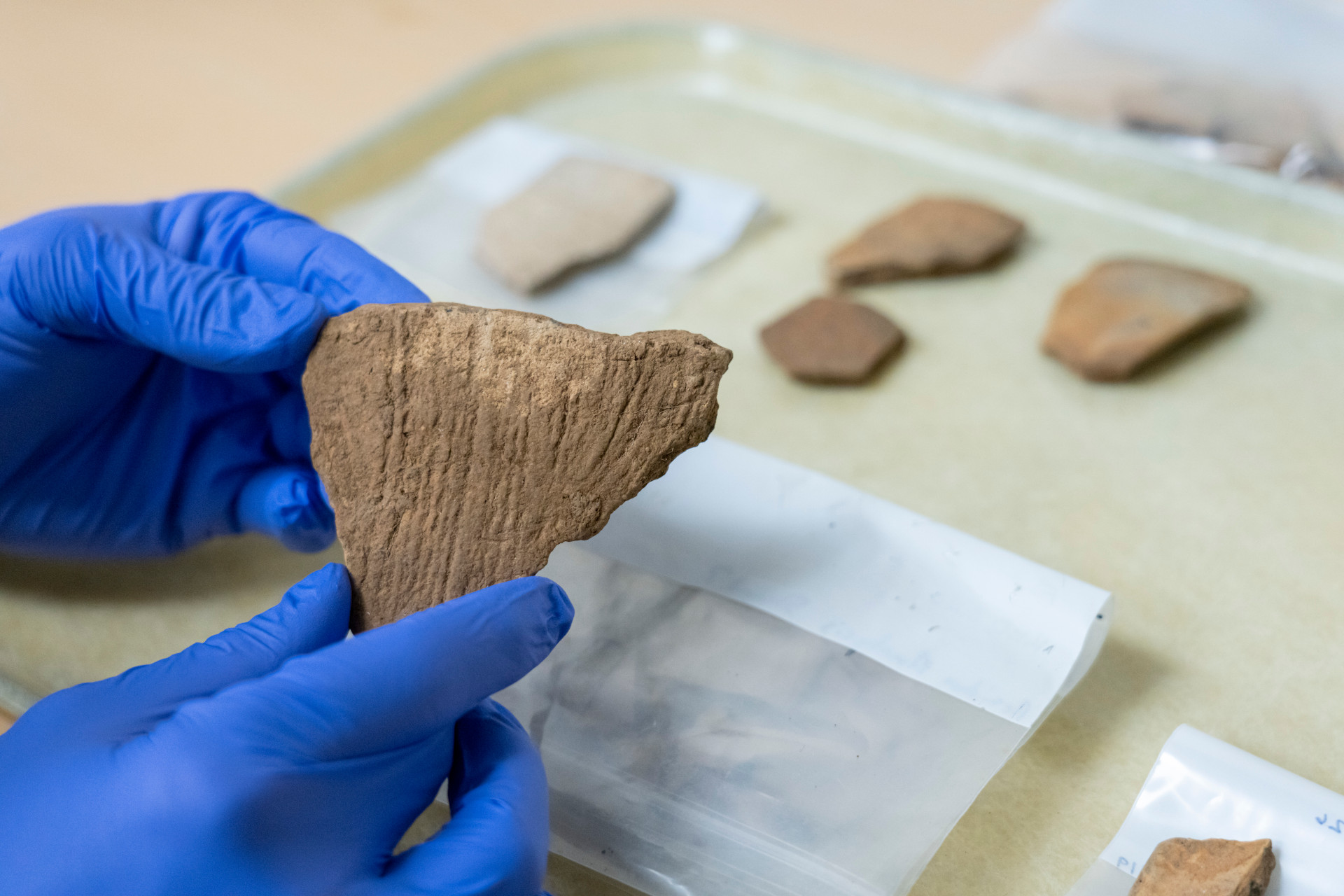
Pottery from West Tennessee
A rim shard of cordmarked pottery, circa 200 A.D., from West Tennessee.
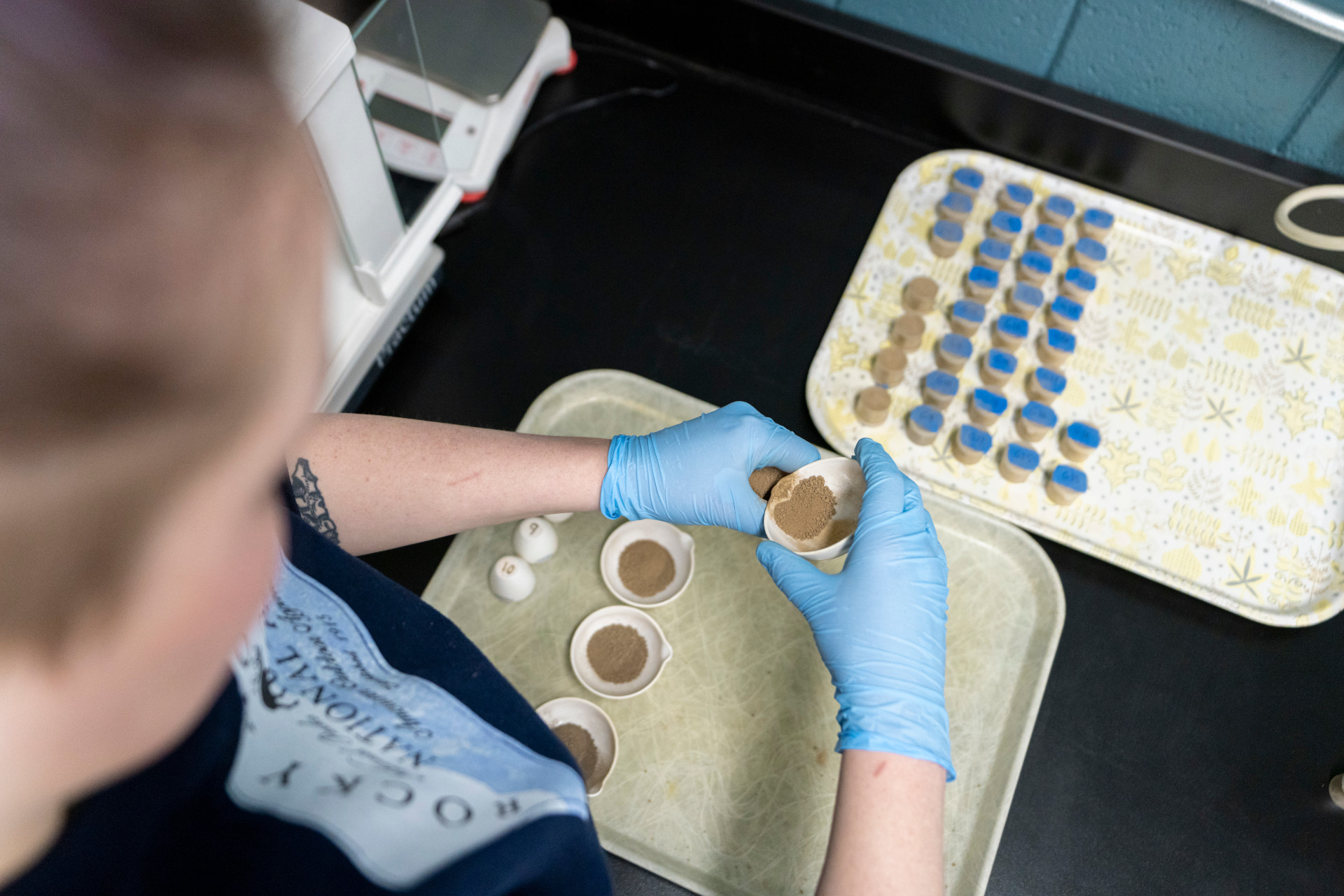
Soil Tells a Story
Anthropology master’s student Lia Kitteringham measures out soil samples from an archaeological site for “sequential loss-on-ignition analyses” that will help determine the organic content of the soil.